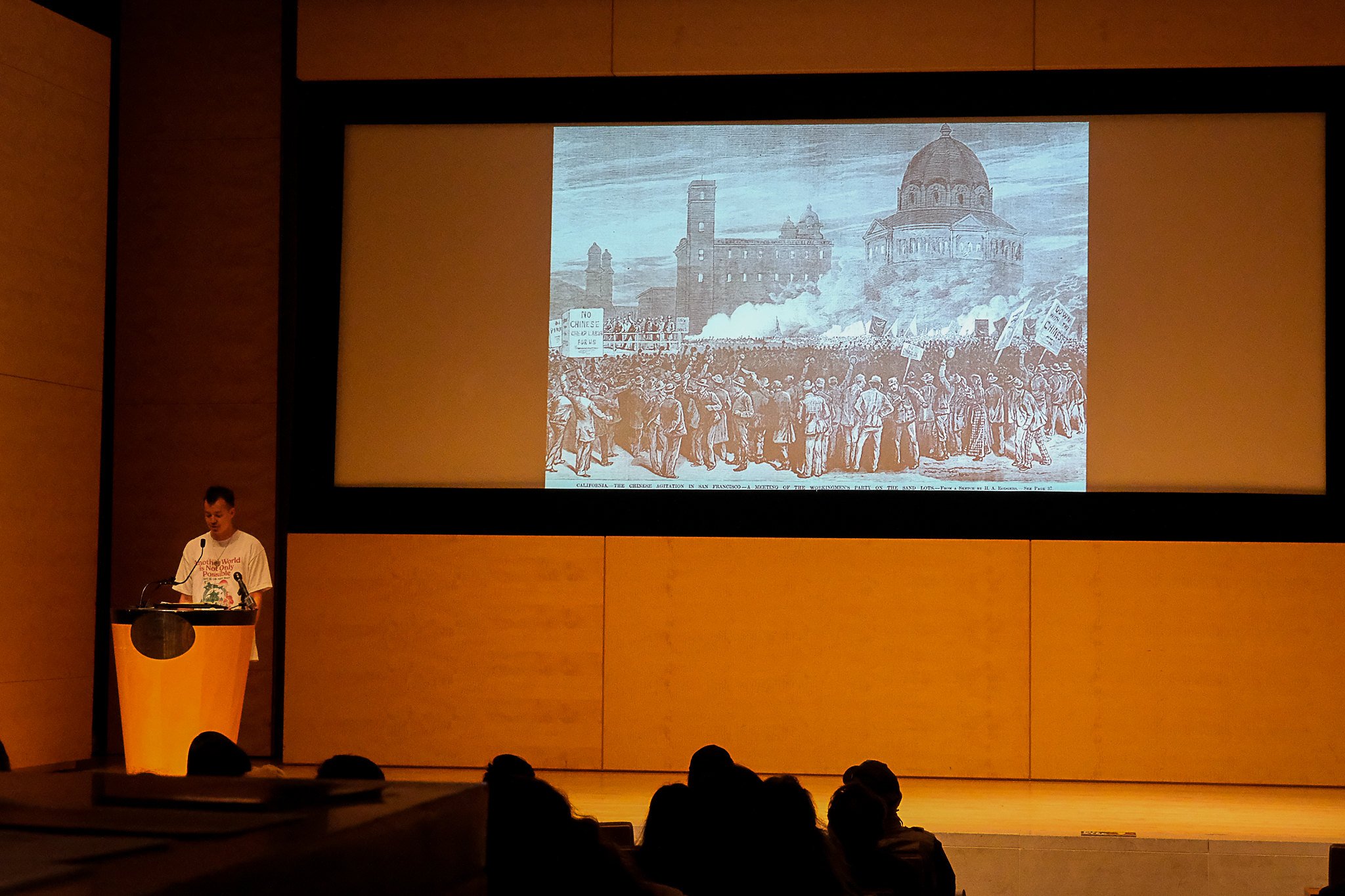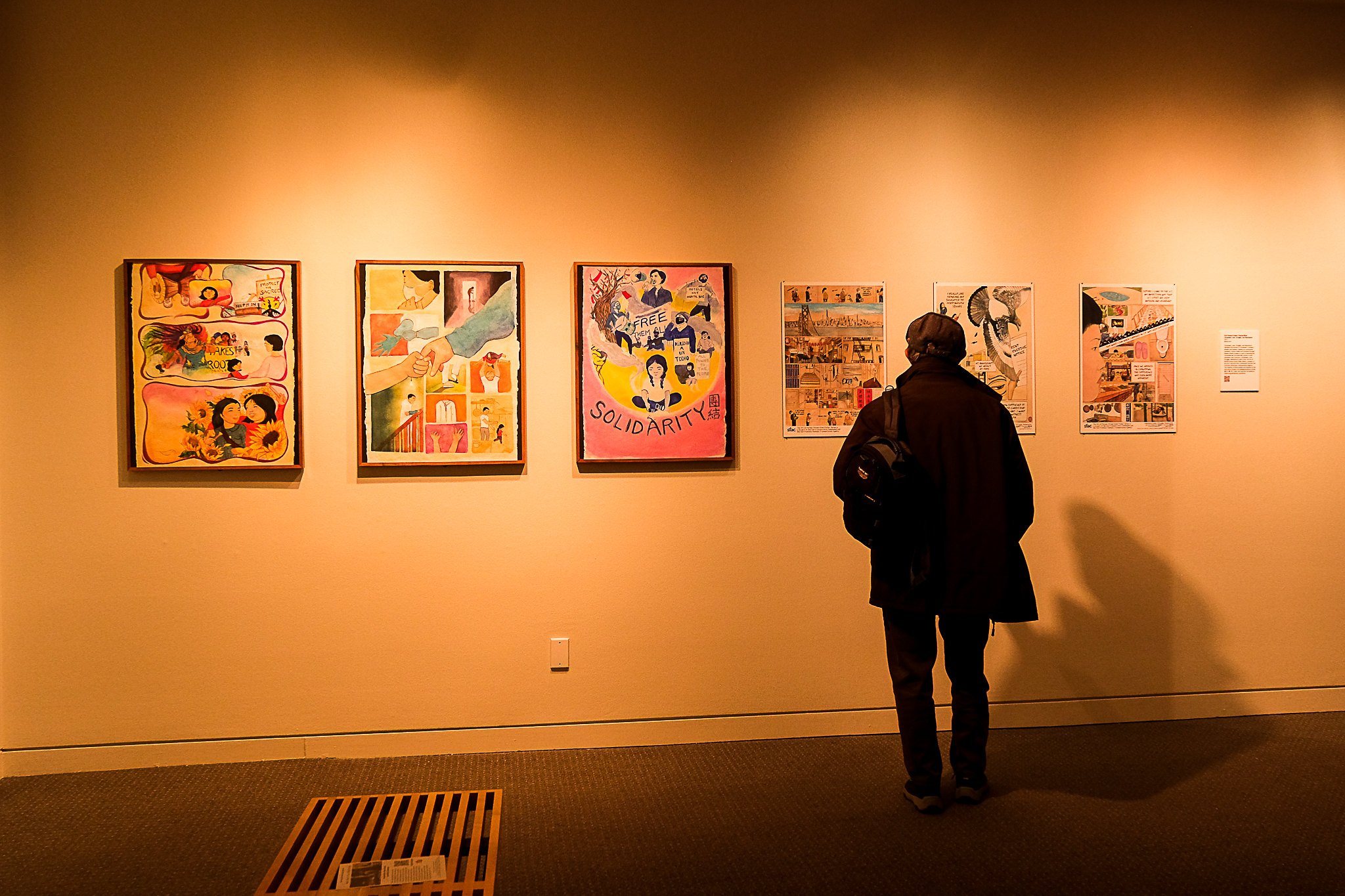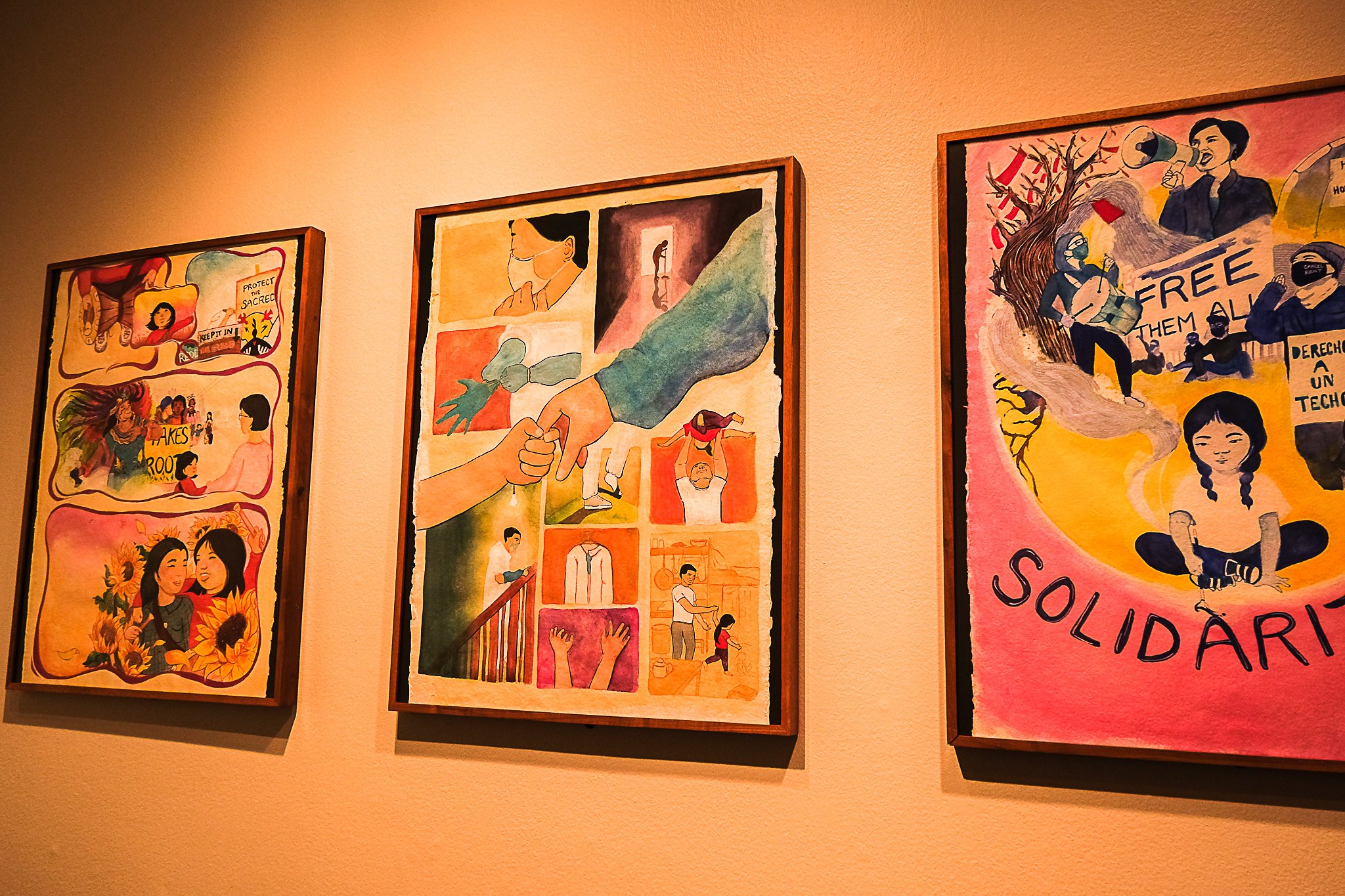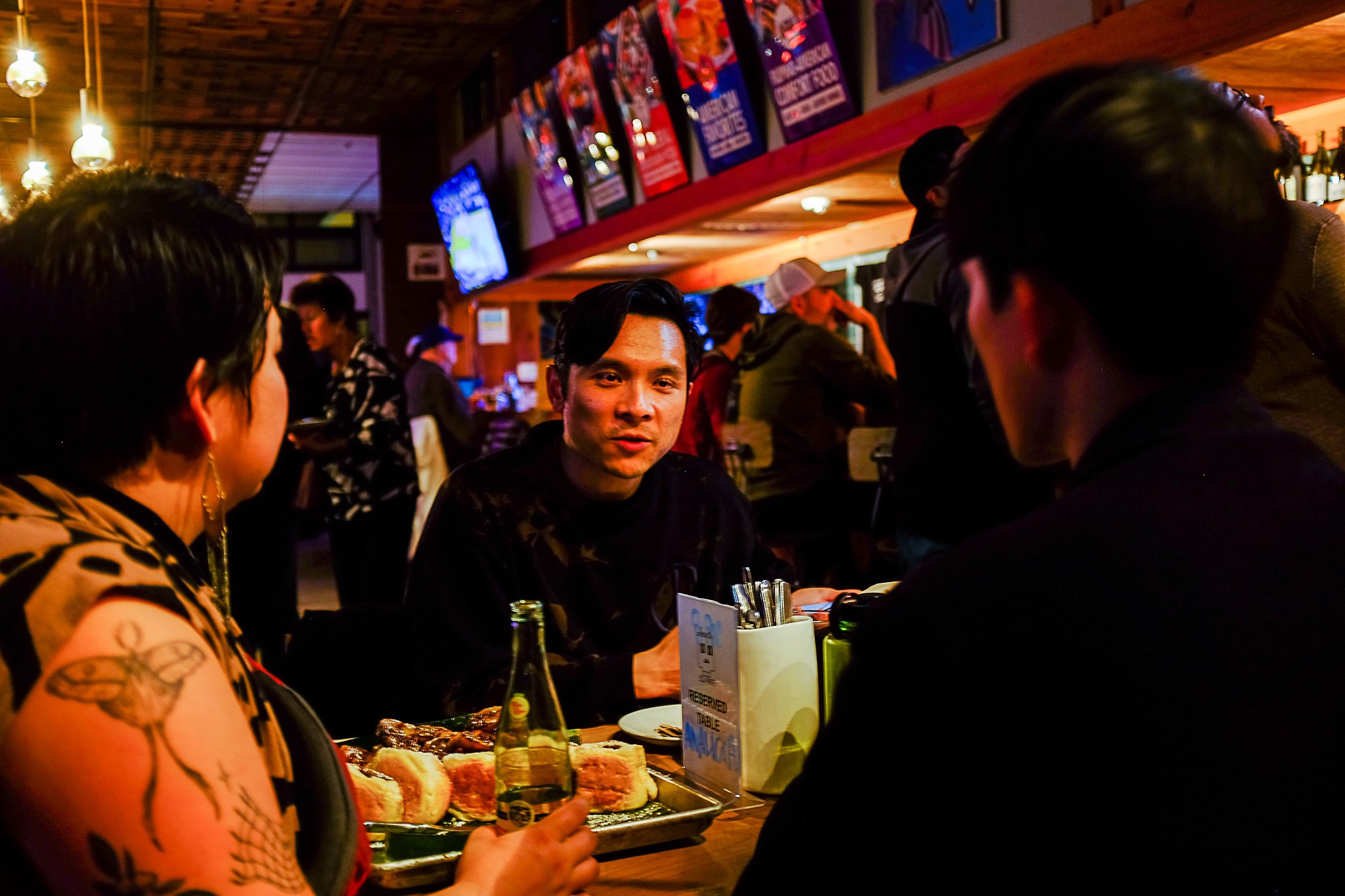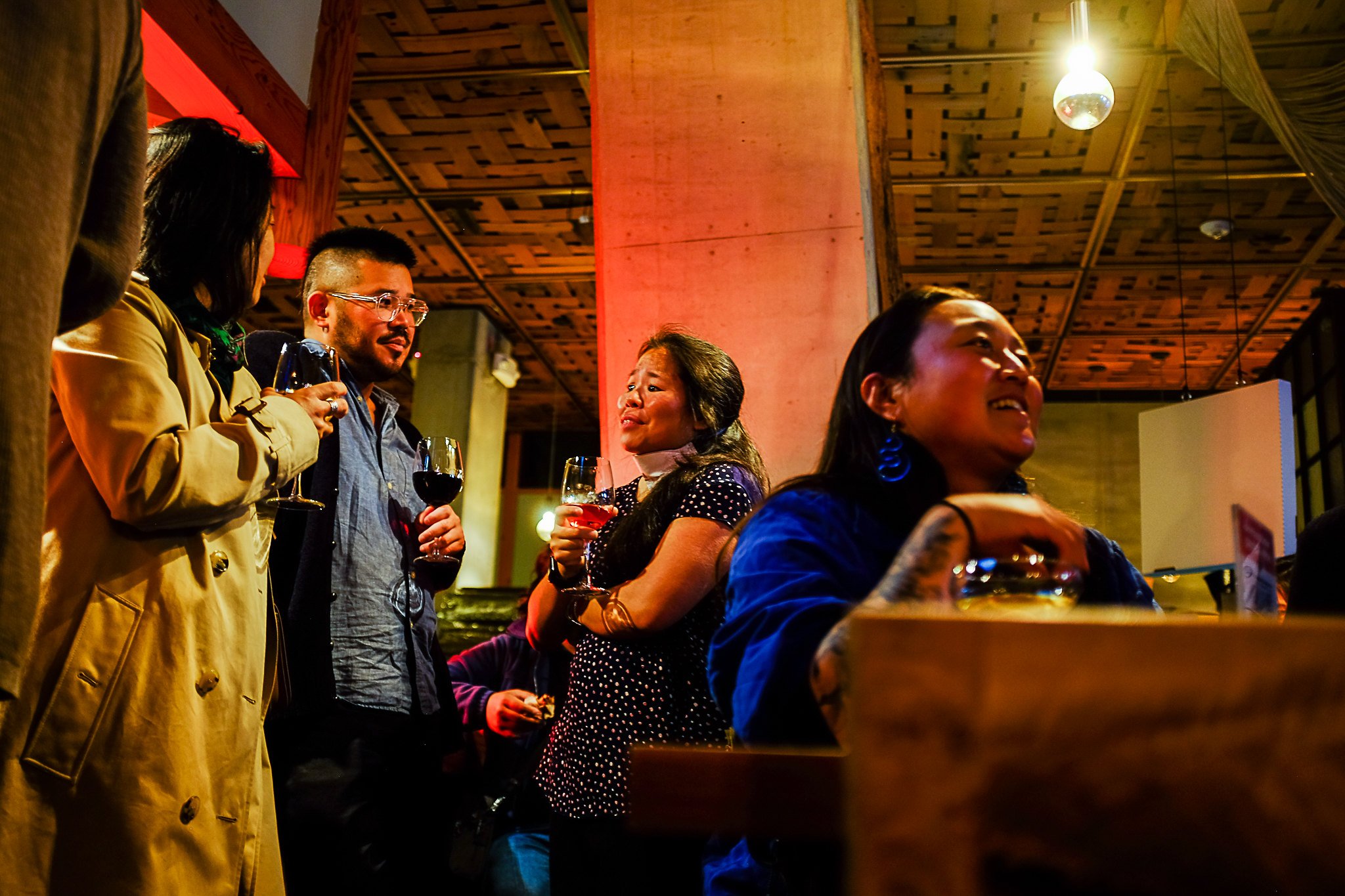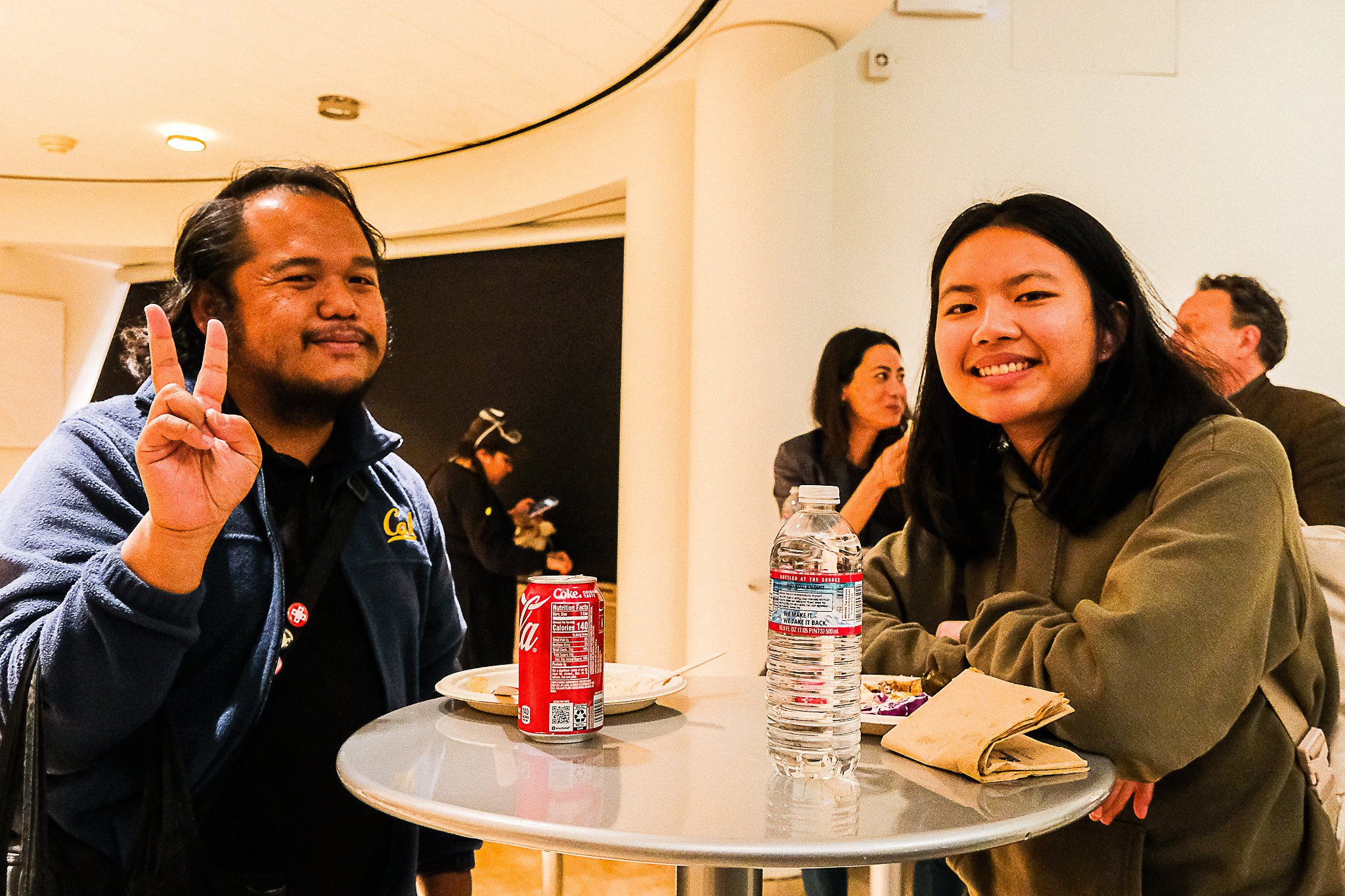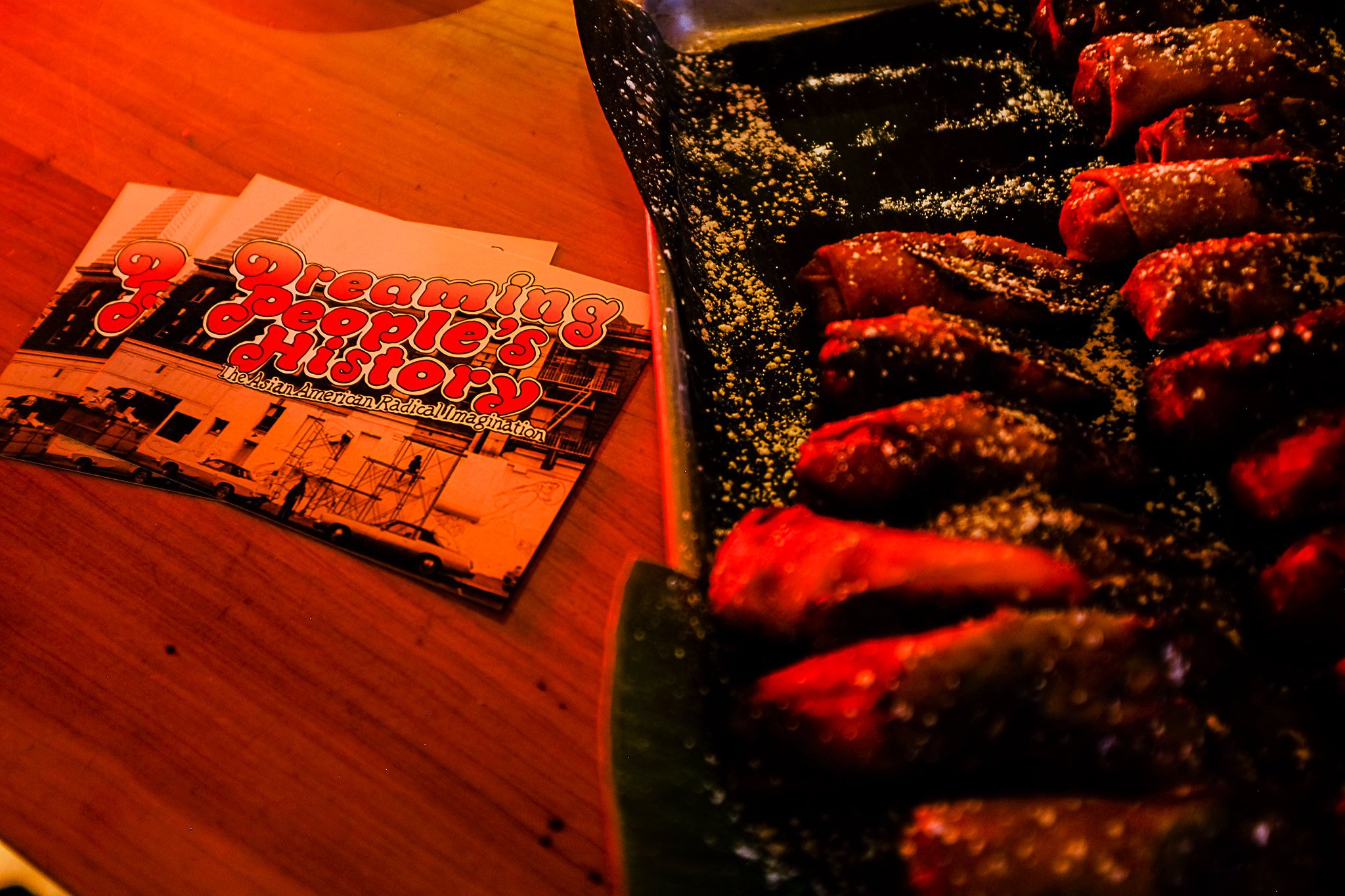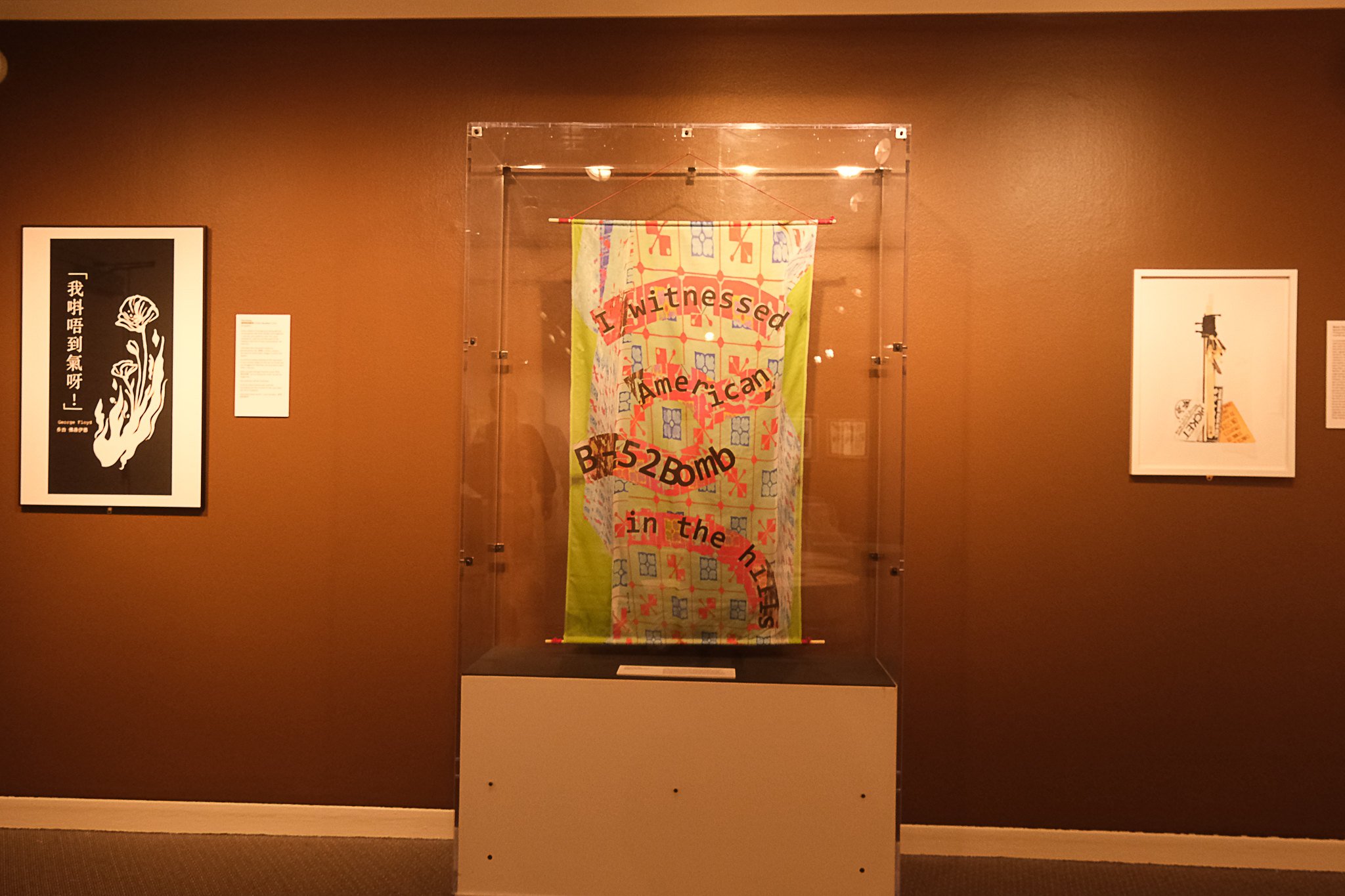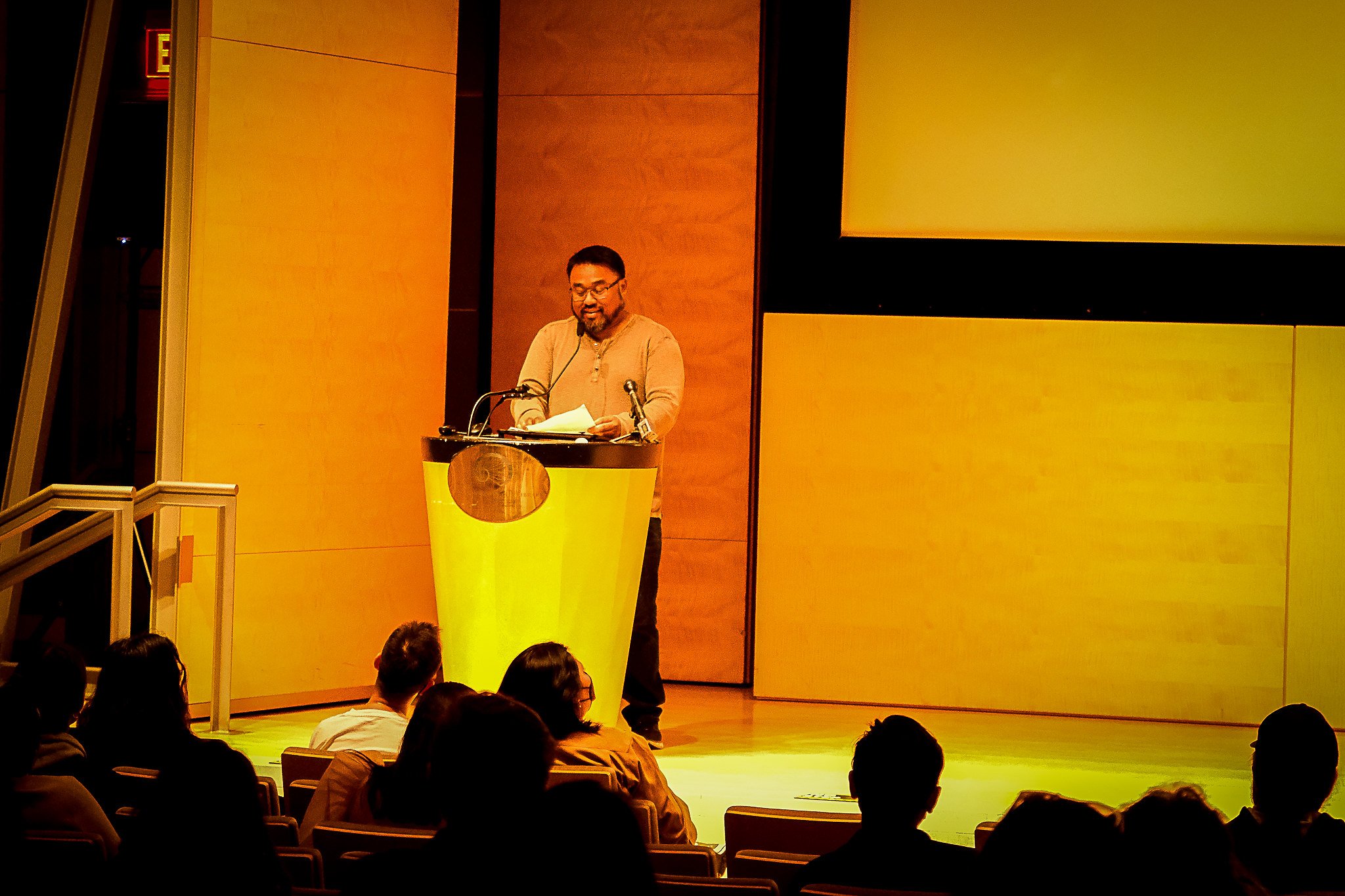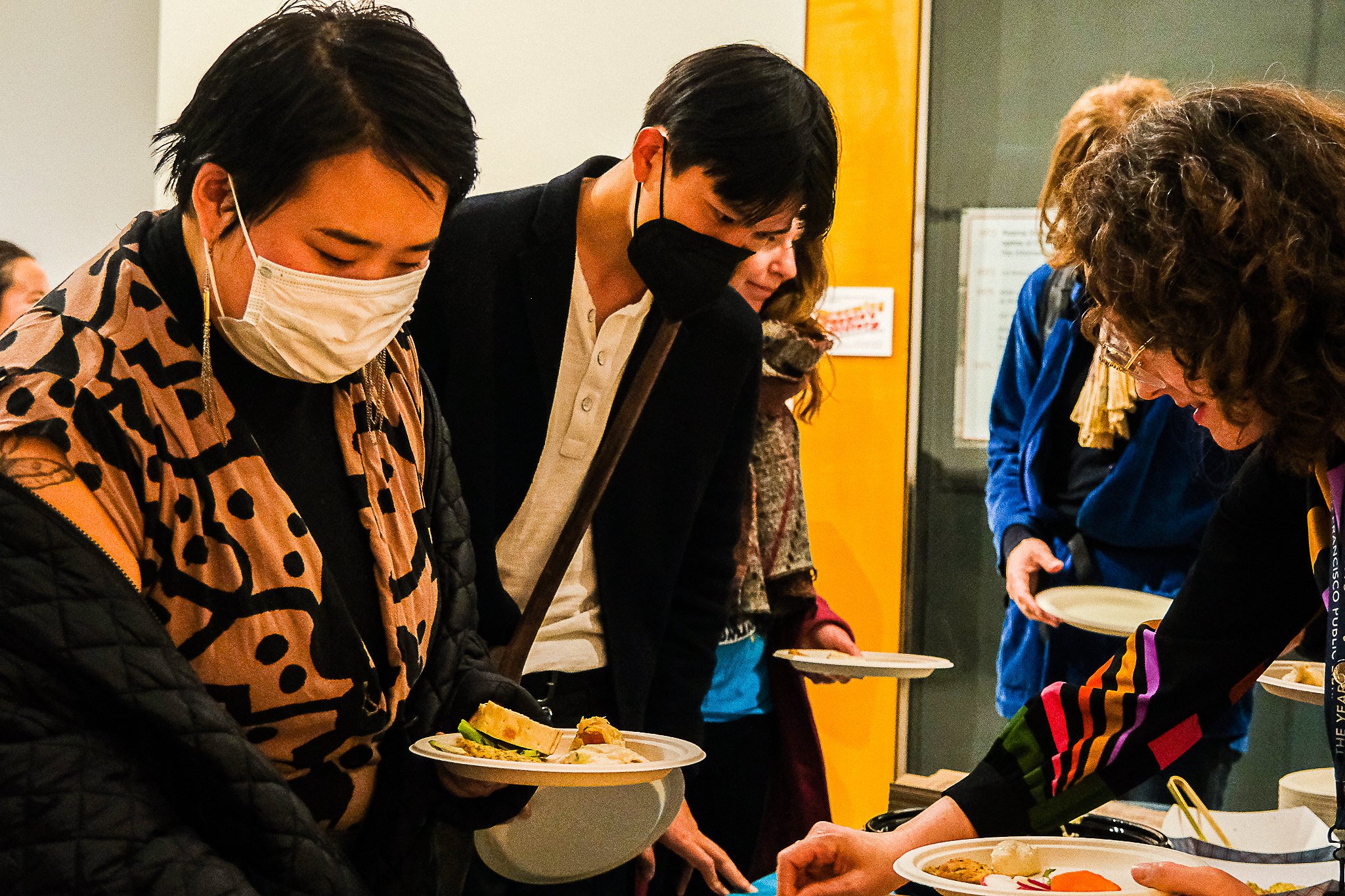Dreaming People's History Opening Reception Recap
Thank you to everyone who came out to the opening reception for Dreaming People’s History! What an incredible night it was. It was a great turnout from the community! Thank you to Michael Lambert, San Francisco’s first Asian American city librarian, for helping to kick off our short program and to Nancy Hom our former ED and KSW stalwart for delivering the opening poems. Thanks, as well, to Harvey Dong, who joined us via recording to talk a little about Eastwind and KSW’s shared history at the I-Hotel.
Our curator, Colin Kimzey, delivered a powerful and gripping talk and it was so good we had to share the text with you, below.
And we got a little bit of press and coverage as well that provide a great recap of the reception and the exhibition, itself.
NEWS
Paolo Bicchieri, “Country’s longest-standing AAPI arts organization debuts exhibition downtown,” May 8
Also check out this instagram Reel by Jon Caña (@jon.luigi)
Save the date! On July 15th at 12pm at SFPL we’ll be hosting an afternoon of panels, poetry, and music to commemorate the exhibition and have some exciting guests to announce, soon!
History from Below the Sandlot (opening reception speech by curator, Colin Kimzey)
I’d like to start with the land. We are on the unceded ancestral homeland of the Ramaytush Ohlone, the original inhabitants and stewards of the San Francisco Bay Area.
After Spanish and US colonization of this land but before it was the Main Branch of the San Francisco Public Library, it was the original City Hall. The area immediately around it, which was yet to be developed, was called the sandlot. During the depression of the 1870s, it was the gathering place for crowds of jobless workers, who became an audience for demagogues blaming unemployment on the Chinese. The anti-Chinese leaders incited what is called the Sandlot Riot of 1877. Over three days, white San Franciscans attacked Chinese people and set fire to buildings in Chinatown, killing four.
So here in the basement of the Main Library, this exhibition is literally history from below. Every part of San Francisco has these layers of hidden history accumulated from the constant reconstruction of the city and the movements of people. That’s what Kearny Street Workshop seeks to investigate with Asian American Virtual Histories, which illuminates the hidden Asian American histories of sites throughout the City. But why are these histories—indeed, all of the histories in this exhibition, here below the sandlot—hidden at all?
This is why I think this exhibition is important right now. We are at a moment when Asian Americans are cast as the faces of rightwing political developments from the nationwide battle over affirmative action to local recalls. Anti-Asian violence is conflated with a nonexistent crime wave, so that stopping it means rolling back the gains of the 2020 George Floyd uprisings.
What is the Asian American heritage we’re celebrating this May? For some, it’s politically expedient to represent Asian Americans as a monolithic model minority. Dreaming People’s History explicitly challenges the model minority myth. It uplifts Asian American histories of solidarity over racism, radicalism over conservatism, and abolition over incarceration.
These radical histories are hidden because they don’t conform to the version of events that is acceptable to the powerful. We know this because well funded political actors are still trying to suppress them, as demonstrated by the attacks on libraries that are specifically targeting ethnic studies.
That’s why, here in the San Francisco Public Library, below the sandlot where they tried and failed to drive Asian people from this stolen land, art that dreams people’s history is important. It is important that we read people’s history, that we write it, that we talk about it with each other, and that we, the people, continue to make history.

